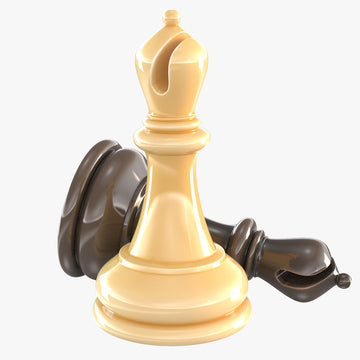

A little history
In the game of shatranj, the bishop initially was able to move only two squares diagonally. This piece in the game would represent the elephant in the Indian army. It was a piece of medium importance.
As the game spread through Europe, it underwent certain changes. The Europeans were not able to relate to the Elephant and hence modified this piece into the Bishop. At the time, it had gained a lot of importance in the churches of Europe. To have such an influence of historical events in a board game is definitely impressive!
The Europeans complained about the slow pace of the game. So in order to speed it up, they also increased the range of movement of the piece. They allowed it to move along diagonals in an unrestricted manner across the board.
Their role and importance
Each bishop carries a value of 3 points. There are two bishops available to each player, one on a dark square and one on the lighter square. Together, they are the light square and dark square bishops.
Each can only move along one particular color of squares (either dark or light). Because of this, each piece can only cover half of the squares on the board. Two bishops however, are able to cover the entire board together.
Good and Bad Bishops?
The nature of the bishops depend a lot on the pawns surrounding it. Depending on the pawn structure surrounding it, bishops may be classified into good and bad bishops.
Check out our article on basic pawn structures for more clarity
A pawn structure that supports the bishop in it's attacks and doesn't block it's movement is advantageous. One involved in such a case is a good bishop. Similarly, a bad bishop is one where the pawn structure actually blocks it's movement of the and makes it ineffective. Given below are instances of good and bad bishops.






